This is going to be a difficult trip guide to do, because I've never done one of these for Columbus before. Once this is done, it will leave Jacksonville as the only city with a major league sports team for which I haven't done one.
I didn't start completely from scratch, but it was difficult, for reasons that have nothing to do with the team in question, or the fans thereof. When I do it again next season (if I do, and I probably will), it'll be comparatively easy to update it. But, this time, it'll be a bit of a job.
Before You Go. Columbus can get really hot in the summer, but this game will be played in late February, and, besides, the game will be indoors. The Columbus Dispatch website is predicting mid-40s for Thursday afternoon, and low 30s for the evening, with a chance of rain.
Columbus is in the Eastern Time Zone, so you won't have to set your clocks back.
Tickets. The Blue Jackets are averaging 14,370 fans per home game this season. That's the 5th-lowest in the NHL, ahead of only Florida, Arizona, the Islanders and Carolina. It's also about 79 percent of capacity, and only Arizona (slightly) and Carolina are doing worse.
Which does beg the question: Why did Columbus get an NHL team? Why not Cleveland or Cincinnati, the more proven major league cities? Probably because somebody (probably Commissioner Gary Bettman) though that neither Cleveland nor Cincinnati could support a team by itself, but a team in Columbus, in Central Ohio, would be supported by the entire State. (Or maybe that theory makes no sense, since he let the Minnesota North Stars move to Dallas, when he could have suggested Austin as a way to get fans from Dallas and Houston.)
At any rate, you should be able to walk up to the box office 5 minutes before puck-drop, and buy any seat you can afford. In the Lower Level, the 100 sections, seats are $110 between the goals and $95 behind them. In the Upper Level, the 200 sections, seats are $80 between the goals and $58 behind them.
Getting There. It’s 536 miles from Times Square in New York to Capitol Square in Columbus, and 526 miles from the Prudential Center to Nationwide Arena.
Flying may seem like a good option, although with a destination city as close as Columbus, you shouldn't have to change planes. But you do, in either Philadelphia or Charlotte. And it's a bit expensive considering the distance, at $851 round-trip from Newark Liberty to Port Columbus International Airport.
Amtrak does not go to Columbus. Its main train station was demolished in 1979 to make way for the Columbus Convention Center (which is too bad, because it was just 2 blocks from the Arena), and it is now the largest metropolitan area in America that doesn't have Amtrak access.
Greyhound’s run between New York and Columbus is about 14 hours with no change of buses necessary, costing $258, and dropping to as little as $98 with advanced-purchase. The station is at 111 E. Town Street, at 3rd Street, downtown, 2 blocks south of the State House.
If you decide to drive, it’s far enough that it will help to get someone to go with you and split the duties, and to trade off driving and sleeping. You’ll need to get on the New Jersey Turnpike. Take it to Exit 14, to Interstate 78. Follow I-78 west all the way through New Jersey, to Phillipsburg, and across the Delaware River into Easton, Pennsylvania. Continue west on I-78 until reaching Harrisburg. There, you will merge onto I-81. Take Exit 52 to U.S. Route 11, which will soon take you onto I-76. This is the Pennsylvania Turnpike, the nation’s first superhighway, opening in 1940.
The Turnpike will eventually be a joint run between I-76 and Interstate 70. Once that happens, you’ll stay on I-70, all the way past Pittsburgh, across the little northern pandhandle of West Virginia, and into Ohio all the way to Columbus.
If you do it right, you should spend about an hour and 15 minutes in New Jersey, 5 hours and 30 minutes in Pennsylvania, 15 minutes in West Virginia, and about 2 hours and 15 minutes in Ohio. That’s about 9 hours and 15 minutes. Counting rest stops, preferably halfway through Pennsylvania and just after you enter Ohio, and accounting for traffic in both New York and Columbus, it should be no more than 11 hours, which would save you time on Greyhound, if not flying.
Once In the City. Founded in 1816, Columbus, named for Christopher Columbus, celebrates its 200th Anniversary this year. It is easily the largest city in Ohio by population, with about 823,000 people, to a mere 397,000 for Cleveland and 298,000 for Cincinnati. But its metropolitan area has just 2.4 million people, still larger than Cincy's 2.2 million but considerably smaller than Cleveland's 3.5 million, because Cleveland has a much larger suburban area.
High Street is the street address divider between East and West, and Broad Street serving as the divider between North and South. The southeaster corner of High & Broad includes Capitol Square, with the State House. The sales tax in the State of Ohio is 5.75 percent, rising to 7.5 percent in Franklin County, including the City of Columbus.
The Ohio State House. No, I don't know why they stopped buildng it
before finishing the dome.
The Central Ohio Transit Authority (COTA) runs buses, but no rapid transit rail system: No subway, no elevated, no light rail, no commuter rail. The fare is $2.00.
Going In. The Arena is about a mile northwest of the State House, in the Arena District, near the confluence of the Scioto and Olentangy Rivers, in an area that includes their minor-league ballpark and their Convention Center.
Several bus lines get you there. The official address is 200 W. Nationwide Blvd. Parking is cheap, starting at $3.00. The rink is laid out east-to-west, and the Jackets attack twice toward the east end.
The Arena includes an in-house practice facility, the OhioHealth IceHaus. It was the 1st NHL arena to have this since the old Madison Square Garden, and inspired the building of the AmeriHealth Pavilion as part of the Devils' Prudential Center project.
The Arena has hosted NCAA Tournament basketball, "professional wrestling" and concerts. The husband & wife team of country singers Tim McGraw & Faith Hill played the Arena's 1st event, and British rock legends Paul McCartney and (the surviving members of) The Who have played there within the past year. President Barack Obama held one of his final 2012 campaign rallies, with Bruce Springsteen and Jay-Z performing.
ESPN The Magazine declared it “the No. 2 stadium experience in professional sports.” The Ultimate Sports Road Trip rated it the best arena in the NHL, saying, "This newer arena in downtown Columbus is the anchor for the emerging Arena District, already burgeoning with shops, restaurants and hotels. The venue is spectacular, from its nostalgic brick and stone veneer to its sweeping concourses with blue mood lighting and modern amenities. The arena bowl has state of the art scoreboards and surround LED graphics boards which look 21st century high tech. With a separate practice rink built right in the facility, theme restaurants and great food selection, not to mention a raucous hockey atmosphere, this NHL venue is a must see!"
But despite its youth, the Arena already has a tragic history. On March 16, 2002, 13-year-old Brittanie Cecil was struck in the head by a deflected puck during the Blue Jackets' game against the Calgary Flames, dying from her injuries 2 days later. As far as can be determine, she is the only fan in the NHL's nearly 100-year history ever to be killed in a game-related accident. As a result of her death, the NHL mandated safety netting in all its arenas.
Food. Being in Big Ten Country, where tailgate parties are practically a sacrament, you would expect the Columbus arena to have lots of good options. They do not disappoint. Their chain stands include ColdStone Creamery behind Sections 108, 121, 202, 203 and 218; Tim Hortons at 210; Kettle Chipper potato chips at 105; Papa John's Pizza 102 and 226; and that Cincinnati specialty, Skyline chili -- chili over spaghetti -- at 105, 119 and 206.
There are stands for that Midwestern staple, Bratwurst, at 108, 121, 202, 203 and 209; a Sausage Haus at 121; a Baked Potato stand at 105; Burgers at 105, 119, 206 and 222; Hot Dogs at 108, 111, 119, 202, 203, 206, 209, 218 and 222; Chicken Tenders at 101, 119, 206 and 222; French Fries at 105, 119, 206 and 222; Cheese Fries at 229; Popcorn at 108, 121, 202, 203, 209 and 218; Milkshakes at 105; and Mexican food at 217.
Team History Displays. As 1 of the 2 newest teams in the NHL, the Jackets don't have much history. They have no retired numbers. They have just 1 banner honoring anyone, founding owner John H. McConnell. "Mr. Mac" was also the founder of Worthington Industries, a steel company. Kilbourn Street, on the Arena's west side, has been renamed John H. McConnell Blvd. in his memory. The team's parking deck, across the Boulevard from the Arena, is named the McConnell Garage. His son, John P. McConnell, now owns both the team and Worthington Industries.
They have just 1 player from their history who has been elected to the Hockey Hall of Fame, the newly-inducted Sergei Fedorov, who played for them from 2005 to 2008, but is better known as a Detroit Red Wing. (I don't know why they haven't retired his number: It's not like 91 is a popular one.) They have never won their Division in 14 tries (not counting the current season and the never-played 2004-05). They've made the Playoffs only twice (in 2009 and 2014), and won a grand total of 2 Playoff games (both in 2014 against Pittsburgh).
Instead of banners detailing the team's history (which wouldn't take many banners), they have banners of the NHL's other 29 teams. Yes, even the teams that Jacket fans don't particularly like, such as Pittsburgh, Detroit and Chicago.
Stuff. The Blue Line Team Store is on the north side of the Arena. The usual items that can be found at a souvenir store can be found there, including Union-style Army hats with the team logo on them.
As 1 of the 2 newest teams in the NHL, starting play in 2000 along with the Minnesota Wild, ther aren't any official NHL videos about the Jackets. Don't count on finding many books about them either: The only one I could find on Amazon.com was Erin Butler's entry for them in the NHL's official Inside the NHL series.
During the Game. A November 19, 2014 article on The Hockey News' website ranked the NHL teams' fan bases, and listed the Blue Jackets' fans 28th, ahead of only Dallas and Arizona: "Jackets fans have decent reputation, but THN metrics suggest it's exaggerated." I'm not sure what that means.
Does it mean that they have an exaggerated reputation for decency?
No, their reputation for decency is fine: You do not have to worry about wearing Devils gear in Nationwide Arena. Their rivals are the Pittsburgh Penguins (a reflection of the Browns vs. Steelers and Bengals vs. Steelers rivalries), the Detroit Red Wings (a reflection of the Ohio State vs. Michigan rivalry), and the Chicago Blackhawks (because everybody in the Midwest seems to hate the Hawks, now that they've replaced the Wings as the Midwest's most successful hockey team). They won't bother New Jersey fans, as long as you don't bother them first.
So you may be asking yourself, "I know what a Yellow Jacket is, it's a nasty stinging insect. I know what a Green Jacket is, it's the jacket you get for winning the Masters golf tournament. But what's a Blue Jacket?" The team's name was inspired by Ohio's connection to the American Civil War: Not only were legendary Generals Ulysses S. Grant, William Tecumseh Sherman and Philip Sheridan from Ohio, but the State lost a greater percentage of its population in battle than any other (on the non-traitor side, anyway).
Leo Welsh is the Jackets' National Anthem singer. The fans, who call themselves the 5th Line (hockey teams usually have 4 forward lines) like to do the "O-H-I-O" chant made famous at Ohio State football games (and copied by the R&B group the Ohio Players on their song "Fire"), and also chant the team's initials, "C-B-J!"
Prior to the start of the 2007-08 season, the team bought a hand-made replica of an 1857 Napoleon cannon. It is "fired" at home games when the Jackets take the ice, score, or win. Their goal song is "The Whip" by Locksley.
The mascot is Stinger the Yellow Jacket, although his costume was changed from yellow to green because it clashed less with the Blue Jackets' blue jerseys. He wears Number 00, in honor of the team's 2000 founding, and tends to bang on a snare drum.
That's right: They say that this clashes less.
After the Game. The Arena district is well-policed, and downtown should be safe. Columbus doesn't have nearly the reputation for crime that Cleveland and Cincinnati do.
As for where to go for a postgame meal or drink, an Italian restaurant called Beppa di Bucco is across from the Arena to the east, a Mexican restaurant named Nada to the west, and bd's Mongolian Grill to the south.
The most famous bar, perhaps in the entire State of Ohio, is the Varsity Club, across from the OSU Ice Arena and 3 blocks north of Ohio Stadium. 278 W. Lane Avenue, at Tuttle Park Place. High Street, the eastern boundary of the OSU campus, has been described as "a zoo" on home football Saturdays, although that won't affect you as a visiting hockey fan.
Unfortunately, the most storied Ohio State fan bar of all, Papa Joe's, home of the Saturday morning Kegs and Eggs breakfast, burned down in 1996. The current pizza chain of the same name has no connection, aside from being an Ohio tradition. Retail space, including the current Ohio State bookstore (a Barnes & Noble, of course), is on the site. 1556 N. High Street at 11th Avenue.
I can find no references to places where New Yorkers gather in or around Columbus: The sites that usually list bars for football fans in exile don’t seem to have references to where Yankees, Mets, Giants or Jets fans go when they live nearby.
If you visit Columbus during the European soccer season, the Fado Irish Pub chain has an outlet here, at 4022 Townsfair Way, about 9 miles northeast of downtown. Number 16 bus.
Sidelights. Columbus may have only the 1 major league team, but it's a decent sports town, and here’s some of the highlights:
* Huntington Park. Just 2 blocks west of Nationwide Arena, at 330 Huntington Park Lane, this 10,100-seat stadium has been home to the International League's Columbus Clippers since 2009. Since moving in, they've won Pennants in 2010, 2011 and 2015, giving them a total of 10 Pennants.
* Cooper Stadium. Opened in 1932 as Red Bird Stadium, and renamed for Harold Cooper, the Franklin County Commissioner and team owner who kept professional baseball in the city in the 1950s, this stadium was one of the most successful ballparks in the minor leagues. It was also one of the largest, seating 17,500 people at its peak, and 15,000 in its last years.
Initially, it was home to the Columbus Red Birds, a farm team of the St. Louis Cardinals (also nicknamed the Redbirds), and to a Negro League team, the Columbus Blue Birds. The Red Birds won Pennants in 1933, 1934, 1937, 1941, 1942, 1943 and 1950.
The Cardinals moved them to Omaha in 1955, and a new team was brought in, the Columbus Jets, a farm club first of the Kansas City Athletics, then of the Pittsburgh Pirates. This led to the stadium being renamed Jets Stadium. They won the Pennant in 1961 and 1965, before being moved to Charleston, West Virginia after the 1970 season. The Pirates restored Columbus as their Triple-A team in 1977, the Yankees took over in 1979, the Washington Nationals in 2007, and the Cleveland Indians in 2009.
The Clippers were a Yankee farm team from 1979 to 2006, infamous as the bad end of "The Columbus Shuttle," George Steinbrenner's pipeline from Triple-A ball to the Yankees and back. As a Yankee farm team, they won IL Pennants in 1979, 1980, 1981, 1987, 1991, 1992 and 1996. All told, Columbus baseball teams have won 19 Pennants.
Cooper Stadium was closed after the 2008 season, but instead of being demolished, it has been converted into an auto racing facility. 1155 W. Mound Street, 3 miles west of downtown. Number 6 bus.
An April 24, 2014 article in The New York Times, showing baseball fandom by ZIP Code, shows that, despite being considerably closer to Cincinnati (107 miles) than to Cleveland (143 miles), the Indians still have a slight edge on baseball fandom in Columbus, on the average having 28 percent to the Reds' 22 percent. The September 2014 issue of The Atlantic Monthly had a similar map, showing that the Browns are more popular in Columbus than the Bengals.
Cincinnati is the nearest MLB and NFL city, while Cleveland is the nearest NBA city. If it had teams in those sports, Columbus would rank 29th in population in MLB, 26th in the NFL, and 25th in the NBA. So don't hold your breath.
* Ohio State. The most famous building in the State of Ohio is Ohio Stadium, or, as ABC Sports' legendary college football announcer Keith Jackson called it, The Big Horseshoe On the Olentangy -- home field of the school usually referred to as "THE... Ohio State University." How big is it? The official seating capacity is currently listed as 104,944, making it the 4th-largest non-racing stadium in the world. 411 Woody Hayes Drive (formerly Woodruff Avenue), 3 1/2 miles north of downtown. Number 18 bus.
The Value City Arena at the Schottenstein Center opened in 1998, at 555 Borror Drive, across the Olentangy River from the Stadium. The Bill Davis Stadium (baseball) and the Jesse Owens Memorial Stadium (track & field) are part of this complex as well.
From 1956 to 1998, Ohio State played basketball at St. John Arena, across from the Stadium at 410 Woody Hayes Drive. It was at this arena that the Buckeyes played the 1959-60 season in which they won the National Championship. Coach Fred Taylor is in the Basketball Hall of Fame, along with 3 players on this team, although 1 is in as a coach: Jerry Lucas, John Havlicek, and "sixth man" Bob Knight.
It was also at St. John that Elvis Presley sang on June 25, 1974. Early in his carer, Elvis played 2 shows at the Franklin County Veterans Memorial Auditorium on May 26, 1956. Built in 1955, it was demolished in 2015, and an Ohio Veterans Museum is being built on the site. 300 W. Broad Street, on the Scioto River, just across from downtown. (The Beatles played in Cleveland and Cincinnati, but not in Columbus.)
Columbus has never hosted an NCAA Final Four. Nor has any other Ohio city. The 13,435-seat University of Dayton Arena, built in 1969, 74 miles west of Columbus, has hosted more NCAA Tournament games than any other facility: 107.
* Indianola Park. Home ground of the Columbus Pandhandles, one of the 1st professional football teams, from 1901 to 1926, before the glut of early pro football doomed them. Along with the Canton Bulldogs, in the 1910s they dominated the Ohio League, one of the NFL's predecessors.
They are best remembered for the 7 Nesser brothers (sons of German immigrants, there were 8, but Pete, 1877-1954, the largest of them, didn't like football and didn't play; there were also 4 sisters): John (1875-1931), Phil (1880-1959), Ted (1883-1941), Fred (1887-1967), Frank (1889-1953), Al (1893-1967) and Ray (1898-1969). Knute Rockne, who did play a little pro football before going back to Notre Dame to coach, said, "Getting hit by a Nesser is like falling off a moving train." In 1921, Ted's son Charlie (1903-1970) played with the Panhandles, marking the only time a father and son have played in the NFL at the same time, let alone for the same team.
The Indianola Shopping Center is now on the site, 3 miles north of downtown. 1900 N. 4th Street at 19th Avenue. Number 4 bus.
* Mapfre Stadium. Opening in 1999, and known until last year as Columbus Crew Stadium before naming rights were sold to a Spain-based insurance company, the Crew moved into this 22,555-seat stadium after playing their 1st 3 seasons (1996-98) before 90,000 empty seats at Ohio Stadium. They won the MLS Cup in 2008, and reached the Final again last year, losing to the Portland Timbers despite playing at home.
The Stadium also hosted the MLS Cup Final in 2001 (San Jose beating Los Angeles), 10 games of the U.S. National Team (including 4 games against Mexico, all 2-0 or "Dos A Cero" wins), and 6 games of the 2003 Women's World Cup (including a 3-0 U.S. win over North Korea).
One Black and Gold Blvd., at 20th Avenue, about 3 1/2 miles north of downtown, near the Indianola Shopping Center. Number 4 bus.
Currently without an NBA team, a May 12, 2014 article in The New York Times shows basketball allegiances in the Columbus area are mixed between the Cleveland Cavaliers and the Miami Heat. But once you get into the suburbs, it becomes more Cavs territory. My guess: Ohio State students from elsewhere, some of whom end up staying in Columbus, stick with their old home teams; while some stick with LeBron James (who's played for both the Cavs and the Heat), and some adopted the Cavs regardless of LeBron.
The aforementioned Ohio Veterans Museum will probably be completed in early 2017.
Ohio Village is a recreated 19th Century community, sort of an updated, Midwestern version of Colonial Williamsburg. 800 E. 17th Avenue, at Velma Avenue. Number 4 bus. The Columbus Museum of Art is at 480 E. Broad Street, at Washington Avenue. Number 10 bus. The Center of Science & Industry (COSI) is across from the Veterans Memorial Auditorium site, at 333 W. Broad Street, at Washington Blvd. Number 10 bus. The James Thurber House, home to the legendary author and humorist, is at 77 Jefferson Avenue,at N. 11th Street. Number 6 bus.
Farther afield -- with no public transportation available -- the Armstrong Air & Space Museum is in the hometown of Neil Armstrong, the late 1st man to walk on the Moon. 500 Apollo Drive in Wapakoneta, just off Interstate 75, 87 miles northwest of downtown Columbus.
No Presidents have come from Columbus, but Rutherford B. Hayes and William McKinley lived there while they were Governor of Ohio. Alas, there was no Governor's Mansion during their times in the office. The Ohio Governor's Residence and Heritage Garden has only been the Governor's Mansion since 1957, and current Governor John Kasich, who is running for PResident this year, already lived nearby (he'd been a Congressman for the area), and so he only uses it for official functions. 358 N. Parkview, in Bexley, about 4 miles northeast of downtown. Number 10 bus.
McKinley's historical sites are all in or near his hometown of Canton, and I'll discuss them in my Cleveland trip guides. Hayes' home, Spiegel Grove, and his grave and Presidential Library are in Fremont, 106 miles north of Columbus. Warren G. Harding's hometown of Marion is 51 miles north. Dying in office in 1923, he remains the last President to have lived in Ohio. As with both locations, there is no public transportation to there from any of Ohio's major cities.
The tallest building in Columbus is the Rhodes State Office Tower, named for the longtime Governor who ordered the Ohio National Guard to fire on the protestors at Kent State University on May 4, 1970. Completed in 1974, it is 629 feet high, and every bit as ugly as the Administration it memorializes. 30 E. Broad Street, downtown, across from the State House.
While lots of movies have been shot and/or set in Ohio, Columbus hasn't been a popular location for them. There have been 2 TV shows set in Columbus: Family Ties, the 1982-89 NBC sitcom that introduced us to Michael J. Fox; and Man Up!, an ABC sitcom set in nearby Gahanna that tanked and was canceled after 13 episodes in 2011.
*
Columbus may be Ohio's largest city, but aside from being the State capital, it's known for 2 things: Ohio State football, and Ohio State anything else. But a Blue Jackets game could be fun, and it's close enough for a fairly easy New Jersey Devils roadtrip.
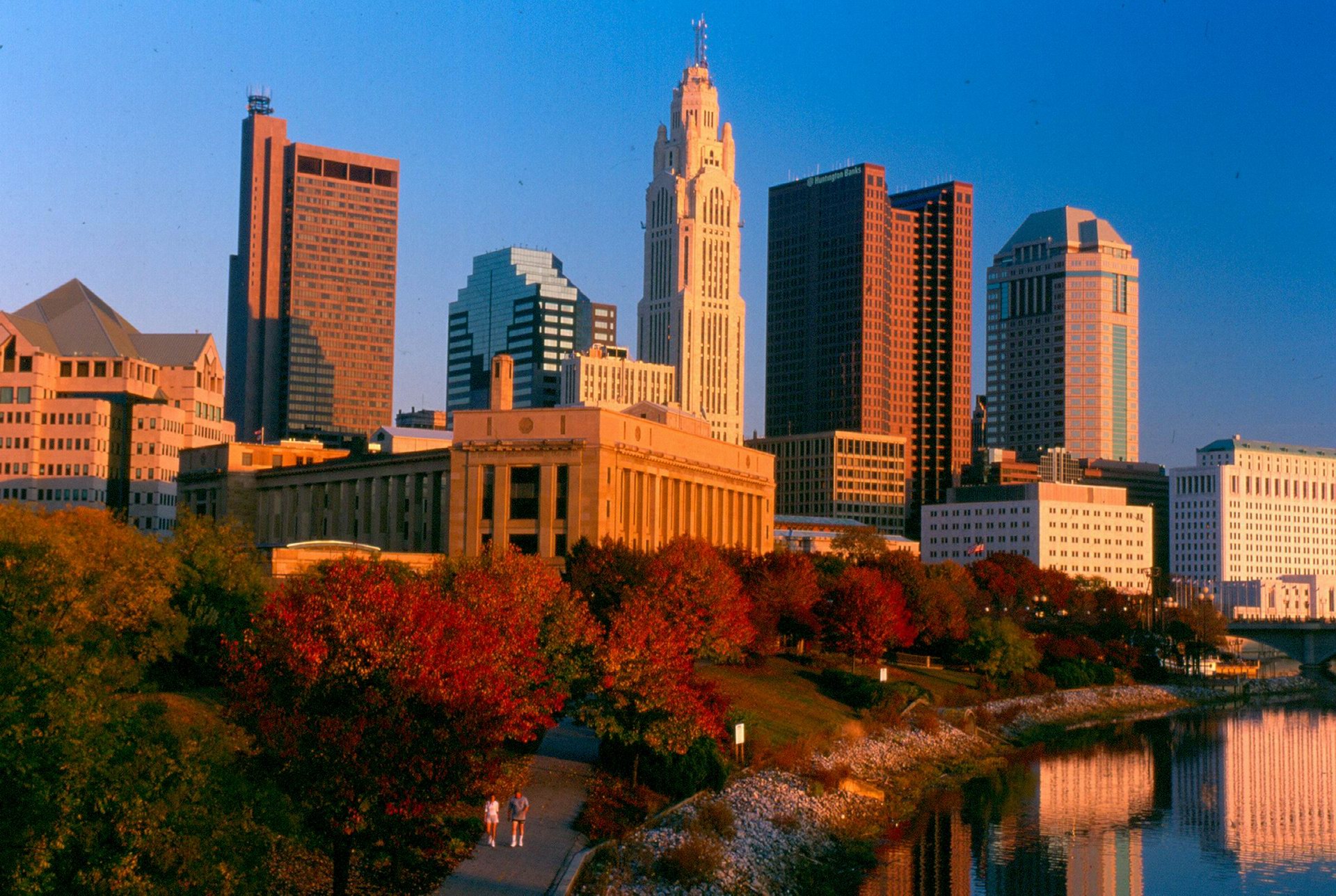
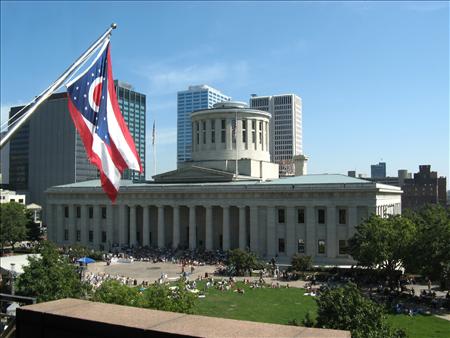

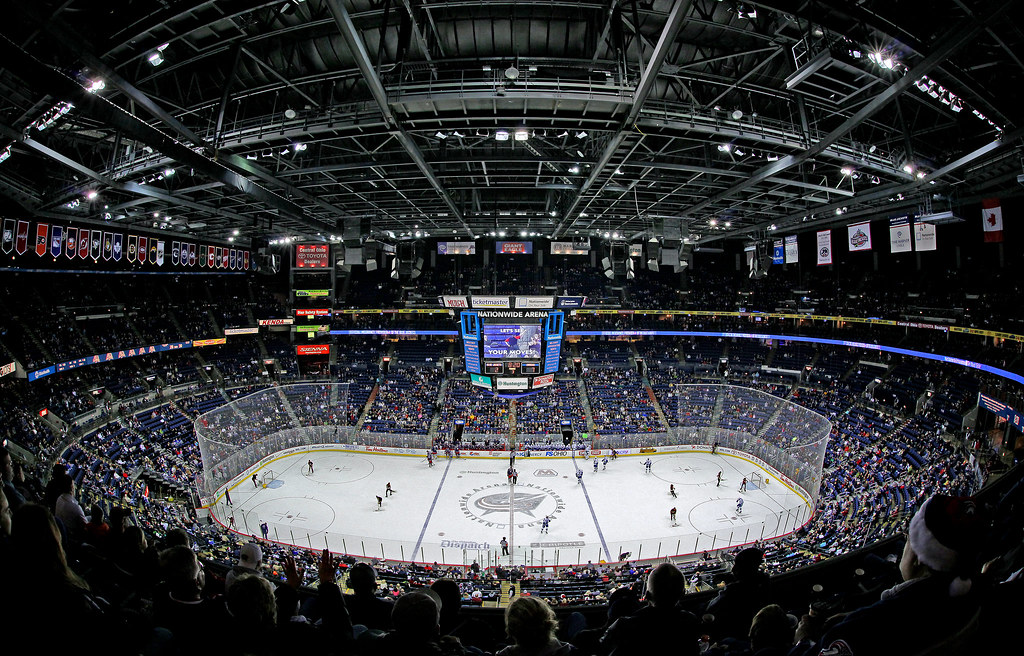


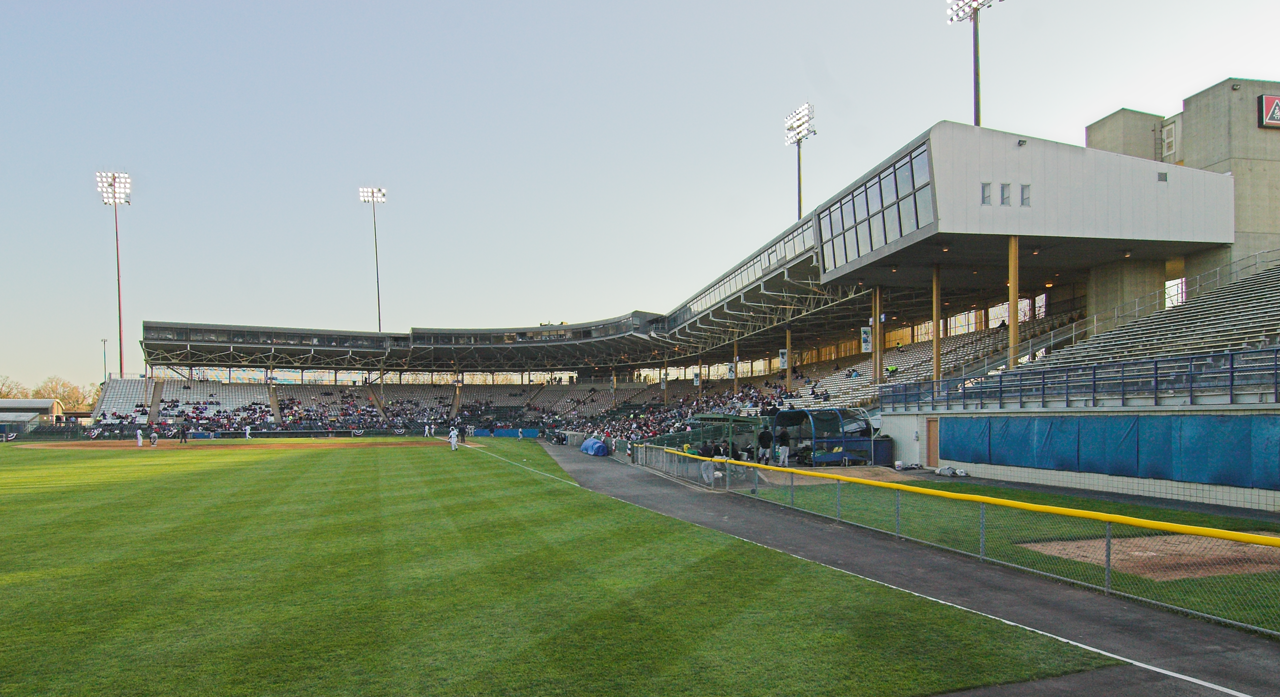




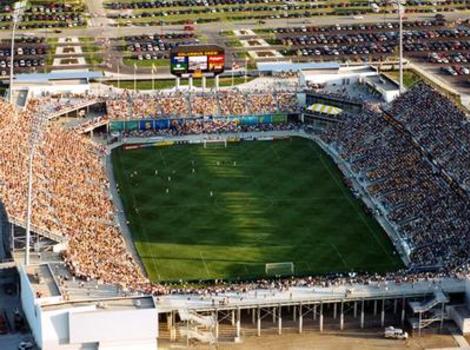

No comments:
Post a Comment